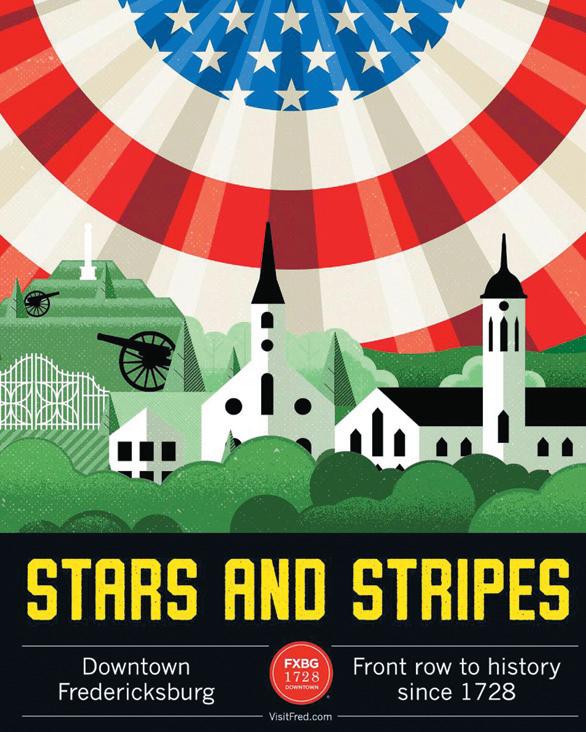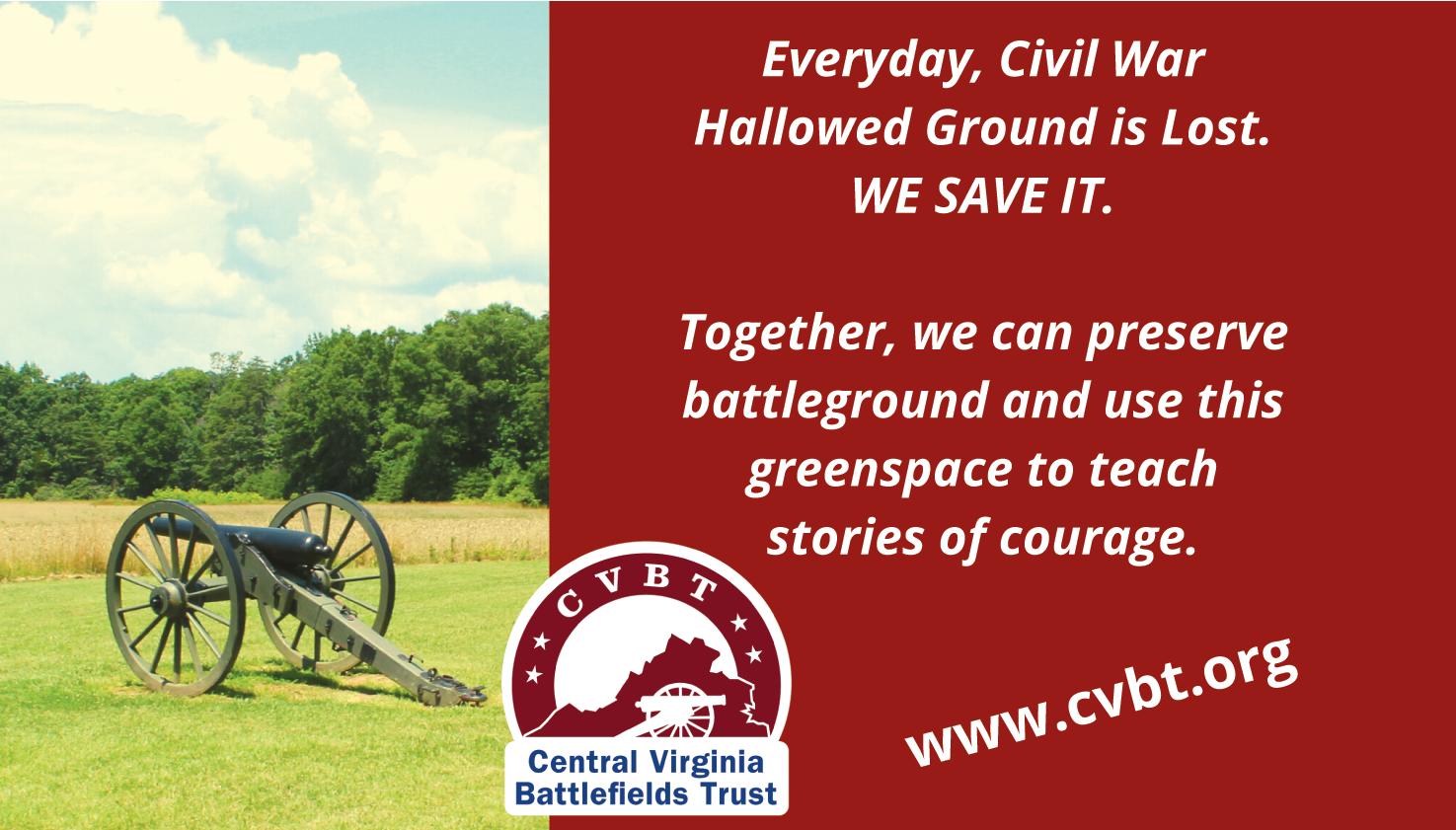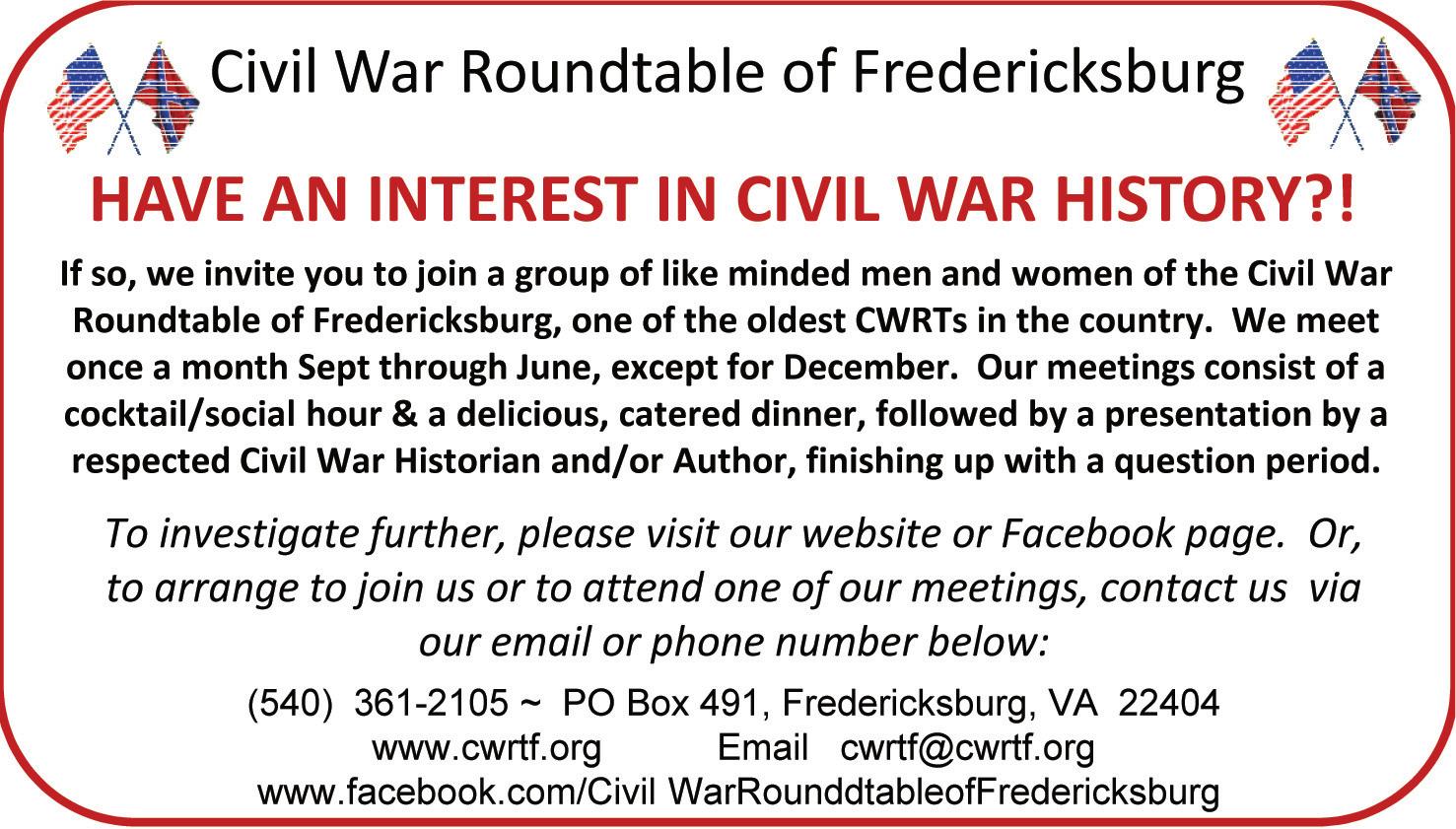
3 minute read
history in our backyard
Donate to a Cancer Organization Let’s Find a Cure!

Advertisement
History in Our Backyard
civil war soldiers fundraised for fxbg community
Fredericksburg's place in the crossfire of the Civil War battle during December 11-13, 1862, is legendary. Normalcy for the small city on the Rappahannock disappeared as artillery shells pounded the buildings, and urban warfare erupted as soldiers battled for control of the town. Then, the new occupiers in blue uniforms plundered many of the civilian homes and businesses.

Schoolgirl Eliza Alsop recorded damages to her family's home in Fredericksburg during the Union occupation of the town. In addition to damage to the family's house and garden and the destruction or theft of most of their food supply, they "put their wounded on the feather beds, which are consequently all stained up, tore up the carpets & put them in the garret, cut up the sewing machine, & threw the wooden part into the garden, but carried off the machinery. Destroyed six gallons of cider in bottles, besides some two or three boxes of mineral water…. Tore up curtains for bandages, shivered mirrors,

great & small, strew books about the garden & removed or destroyed one volume of almost every work. Broke up china & glass in the greatest abundance, & managed to [make] it impossible for us ever to get things as they once were. When any one asks Father how much they injured him he says I can tell you much better what they left, than what they destroyed."

By Sarah Kay Bierle
Many historians and War on the homefront as Union soldiers fought and plundered writers have Fredericksburg in 1862. (Library of Congress) addressed the details and effects of war on the homefront as it occurred in Fredericksburg. However, there's a lesser known response, offering a portrait of compassion and kindness in response to the destruction suffered by the community. It's a small, usually overlooked postscript in Fredericksburg's Civil War history, and a gentle reminder that we can pull together to help those in need and support our local community through difficult or challenging times. During the With Union troops back across the river and Confederate soldiers settled into winter camps, the southern soldiers started the 19th Century equivalent of a "Go Fund Me" campaign to provide financial aid to the suffering community. Jedidiah Hotchiss, a topographical engineer serving on General "Stonewall" Jackson' s staff, recorded in his winter of 1862-1863, some of the soldiers who had surrounded and battled through the town, across the railroad tracks, and through the farmlands became the ones to rally to fundraise to repair some of the damages caused by war. Sometimes kindness and compassion shine brightest after the darkest pages of history. ...the southern soldiers started the 19th Century equivalent ofa "Go Fund Me" campaign to provide financial aid to the suffering community....It's a small, usually overlooked postscript in Fredericksburg's Civil War history, and a gentle reminder that we can pull together to help those in need and support our local community through difficult or challenging times. diary on January 3, 1863: "A donation of over $700 was sent in by a Ga [Georgia] Sarah Kay Bierle serves on staff at Regiment for the Fredericksburg Central Virginia Battlefields Trust; when sufferers, and all parts of the army are not at work preserving historical sites, giving liberally to the despoiled people. she is often reading or hiking. Central The Gen. gave $100."
It seems that some friendly competition occurred between units in the Army of Northern Virginia. Hotchkiss wrote on January 7: "I drew my pay for Nov. & Dec. 1862, today & gave $15 to the Fredericksburg fund, for the relief of the sufferers by the enemy. Our Hd. Qrt. [head quarters] have raised over $800, & A.P. Hill's Div. [division] some $10,000.00"
Virginia Battlefields Trust seeks to preserve battlefield land to protect the memory, meaning, sacrifices, and stories of the Civil War soldiers who fought and fell here. To learn more about this grassroots preservation organization and their 24 years in the local community, please visit: www.cvbt.org










